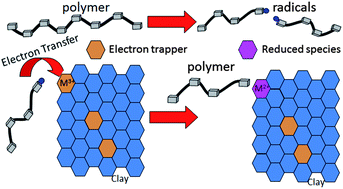Polymer–clay nanocomposites thermal stability: experimental evidence of the radical trapping effect†
Abstract
The radical trapping flame retardant mechanism of polymer–clay nanocomposites is frequently claimed to be responsible for improving the thermal stability of polymers. However it had never been demonstrated. Herein using in situ time-resolved X-ray Absorption Spectroscopy (XAS) we present experimental evidence that Fe3+ embedded in the clay can act as electron acceptors during polymer thermal decomposition. Therefore it contributes to improve the polymer thermal stability.


 Please wait while we load your content...
Please wait while we load your content...